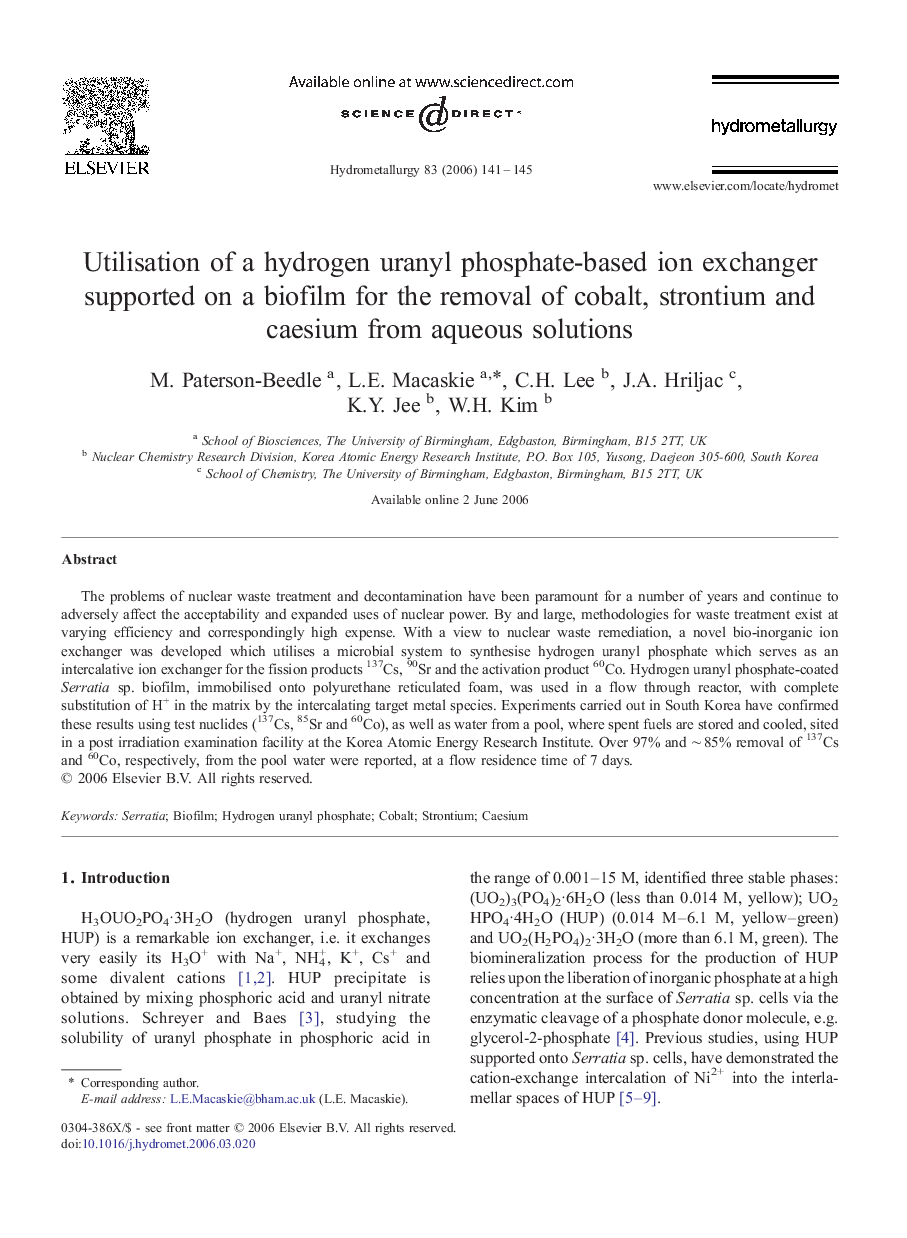| Article ID | Journal | Published Year | Pages | File Type |
|---|---|---|---|---|
| 213603 | Hydrometallurgy | 2006 | 5 Pages |
The problems of nuclear waste treatment and decontamination have been paramount for a number of years and continue to adversely affect the acceptability and expanded uses of nuclear power. By and large, methodologies for waste treatment exist at varying efficiency and correspondingly high expense. With a view to nuclear waste remediation, a novel bio-inorganic ion exchanger was developed which utilises a microbial system to synthesise hydrogen uranyl phosphate which serves as an intercalative ion exchanger for the fission products 137Cs, 90Sr and the activation product 60Co. Hydrogen uranyl phosphate-coated Serratia sp. biofilm, immobilised onto polyurethane reticulated foam, was used in a flow through reactor, with complete substitution of H+ in the matrix by the intercalating target metal species. Experiments carried out in South Korea have confirmed these results using test nuclides (137Cs, 85Sr and 60Co), as well as water from a pool, where spent fuels are stored and cooled, sited in a post irradiation examination facility at the Korea Atomic Energy Research Institute. Over 97% and ∼ 85% removal of 137Cs and 60Co, respectively, from the pool water were reported, at a flow residence time of 7 days.
